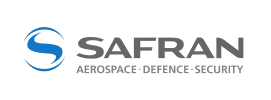Vibra Finish Limited
Your Vibratory Finishing & Shot Peening Services & Equipment Partners
serving finishing
excellence since 1972
Our Services
We’ve got end to end
solutions for your needs
Deburring is a process to eliminate sharp edges and contaminants from metal, alloy, superalloy and plastic components. Using specialized equipment such as tumblers, vibratory finishers, or abrasive blasting machines, deburring removes burrs and other surface imperfections generated during the manufacturing process. This results in a smooth surface with a reduced risk of fine particles contaminating assemblies and handling injuries from sharp edges.
Vibratory peening is a surface treatment process used to improve the fatigue strength and performance of metal components. It involves subjecting the components to high-frequency vibrations while they are immersed in a process specific media. The mechanical action of the vibrating media on the component’s surface induces compressive residual stresses, enhancing its resistance to fatigue and stress-related failures.
Enhance the strength and durability of your parts with our shot peening services.
Washing and degreasing is a crucial step in the surface treatment process. It removes contaminants, oils, grease or residue from the part’s surface, ensuring it is clean and ready for subsequent processes such as machining, welding, coating, plating, or final assembly. We offer high-quality washing and degreasing services to meet our clients’ cleanliness specifications. We use alkaline cleaners, acidic cleaners, mild acids, and soaps to prepare materials for further processing.
Ideal for metallic components that have come directly from a steel mill, or that have been heat-treated or welded, our descaling process effectively removes any heat-treated scales or oxides from the surface. This results in a cleaner, smoother finish which prepares the part for its next stage of manufacturing or assembly.
Rust can be a common issue for metal parts, especially when exposed to moisture or corrosive environments. Our specialized rust removal process safely and effectively removes rust without damaging the underlying material. De-rusting results in clean, smooth, and rust-free components ready for further processing or use.
We use a variety of techniques, such as surface cutting, grinding, and polishing, to prepare your materials for the next step. We also offer specialized services, such as shot peening for metal, alloy, superalloy components, to enhance their strength and durability.
From advanced
manufacturing to
bulk scale we’ve
got the experience









































We Hold These Certifications




Our Valued Partnerships
“From the success of the previous collaboration, as of January 1st, 2024, Vibra Finish Limited and the University of Polytechnique, Montreal will be partnering on a scientific research program with industry leaders in the aerospace community to further develop these new technologies and explore how best to implement these developments in to practical use”. - Zach McGillivray




Media is propelled at high velocity during peening and blasting operations.
Various shot types exist for your application.
Cut wire and cast steel shots can be used for both blast cleaning and shot peening
while plastic media and Grit are essentially used for blast cleaning.
Our media is available in a wide range of size in each category (Cut wire, cast shot, grit etc) .
Custom sizes are available upon request.

Ceramic Media is recommended for light and heavy deburring, tough metal removal and cutting hard or heavy metals such as steel or stainless steel. It is also used to remove rust on parts and general purpose polishing various materials. Call us today to discuss your requirements.

Ideal for soft metals like brass or aluminum and for stringy materials. Typically used on pre-paint or pre-plate finishing, polishing, and deburring. Provides a smooth and durable finish.

Steel media can be used for light deburring as well as peening. Peening surfaces work-hardened by imparting compressive stress resulting in longer part life and higher wear resistance. Peening action reduces porosity while boosting corrosion resistance. Stainless and carbon steel media are available.

Glass beads can be used for peening, finishing or cleaning. Glass spheres used in vibratory finishing applications can smooth, burnish and polish. Glass beads are non-toxic and harmless to the environment. Available in various sizes.

MILD ACIDIC BURNISHER: For polishing and burnishing of Zinc, Brass, Copper, Aluminum and Steel / Iron. PH 4.8 and Biodegradable. Use with plastic, ceramic or steel media.
L-243
L-245

RUST INHIBITORS: For short term rust inhibition of Steel / Iron. PH 9.5 and Biodegradable.
082G
R-501
R-601
AWM

ALKALINE CLEANERS: For cleaning, deburring and degreasing of Zinc, Copper, Aluminum and Steel / Iron. PH 11.5 to 12.0 and Biodegradable. Use with steel and ceramic media.
L-350
L-100
L-227

In Vibra-Max technology, each machine is built specific to customer part requirements.

What’s your project?
Challenges we’ve solved in the past
When 3D printing (originally SLS) was invented in 1984 the concept attracted interest from designers and innovators alike. It was futuristic and unique and the notion fertilized considerations of what many uses “printing” could have however, the technology was young and limitations were apparent. It would be two decades and many R&D hours later before it would be available for on-demand manufacturing. This happened in 2006.
Since the first on-demand printers were put to use, most applications were limited to creating prototype models used as references and demonstrations of parts that would be made using traditional manufacturing techniques. The continuous developments have grown concepts and potential uses into the production of usable, functioning parts.
It is now 2019 and the capabilities of part printing are seen in a range of materials and applications found in industries from automotive and aerospace to everyday consumer goods, but one issue still limits further advancement of the 3D printing industry’s almost limitless potential; Stair stepping.
Stepping is a common issue, a result of printing a part from the bottom up, adding material layer by layer. With intricate parts with varying geometries, some layers are wider than others, creating a “stair” like step from one layer to the next. Although this issue is constantly being improved resulting in tighter tolerances, the fine steps on the finished parts surface still exist and can create both aesthetic and functionality issues.
A large portion of our business at Vibra Finish Ltd in Mississauga is surface improvement of parts manufactured using many different methods. We not only process parts in-house, we also manufacture the equipment to do the job and develop processes with special media and compounds that our customers can use in their facilities with our equipment. Recently we have seen a significant number of requests for this requirement, specifically from customers who have purchased 3D printers to make their own parts as well as manufacturers who make the printers themselves. Most of the materials used to make these parts are more resistant to traditional vibratory finishing. This was apparent during our early testing on these parts which we began a few years ago. To directly compare our results we processed two similar parts made from the same materials that are common in printing such as nylon, plastic, stainless steel, aluminum, and nitinol. For the test we used one part that was 3D printed, the other was machined or casted. The printed parts showed a significantly less wear rate than those made using other methods which meant in order to attain the same level of finishing; it required more consumption of water and medias as well as longer processing times. There are media on the market that have higher abrasives which reduce cycle times but the trade-off is the rate of wear in medias which can be significant.
Since these discoveries we have run thousands of parts for customers with varying requirements of printed parts. Our successes have come from our R&D department who have been working alongside our media suppliers developing new media of different shapes and sizes to accommodate different part geometries. These new 3D specific medias also contain a high level of abrasive, similar to “fast-cutting” media with bond compositions that are dense to combat the wear levels that take place when running extended cycle times.
These new products along with our application specific, custom-built machines have opened up the gates where final-finish processing, done often by hand had previously bottle-necked the production volume.
The history of media finishing goes back centuries, long before sophisticated machinery would do the job for us. The concept is basic but the need for the application’s improvements are in high demand. With the manufacturing industry ever changing, it will continue to grow as the technologies of our time force us forward. You print the parts, we will finish things up. It’s what we do.
Zach B. McGillivray
Business Development/R&D Manager
Vibra Finish Ltd
High-volume parts washing is a critical process in modern manufacturing facilities that handle large quantities of metal and alloy components. This case study explores how Vibra Finish Limited, a manufacturing/parts processing company successfully implemented a high-volume parts washing system, leading to improved efficiency, reduced production costs, and enhanced output quality.
Vibra Finish Limited specializes in processing various automotive components for the global market. With an increasing demand for their combined services in multi-process requirements (shot peening followed by washing and often rust prevention chemistry, they faced challenges in maintaining a high standard of cleanliness and surface preparation for the parts. Traditional manual washing methods proved to be time-consuming, labor-intensive, and inconsistent, impacting overall production timelines and product quality.
In search of an efficient and cost-effective solution, Vibra Finish Limited invested in high-volume parts washing systems. The new systems incorporated an automated conveyor belt, spray jets, and immersion tanks with specialized cleaning agents, designed to handle large batches of components at a time.
The implementation process began with an in-depth analysis of the customer’s specific washing requirements, component sizes, and material compositions. Collaborating with a leading industrial cleaning equipment supplier, Vibra Finish Limited customized the system to accommodate their diverse range of customer’s parts effectively.
The high-volume parts washing system was integrated into their production line, allowing parts to move seamlessly from one stage of processing (shot peening) to the cleaning process. The automated conveyor system ensured a continuous flow of parts, minimizing downtime and increasing productivity.
Enhanced Efficiency: The automated system significantly reduced manual labor, resulting in faster cleaning cycles and improved production rates. The overall manufacturing process became streamlined, reducing lead times and increasing throughput.
Consistent Quality: The precise control of cleaning agents and temperatures in the high-volume parts washing system led to consistent and uniform cleaning results. This consistency in surface preparation enhanced the quality of finished products, reducing the risk of defects or rejections.
Cost Savings: By eliminating the need for extensive manual labor, the company experienced substantial cost savings in the long run. The reduction in rework and scrap also contributed to overall cost-effectiveness.
Environmentally Friendly: The high-volume parts washing system utilized environmentally friendly cleaning agents, reducing the environmental impact of the manufacturing process. It adhered to the company’s commitment to sustainable practices.
Implementing a high-volume parts washing system proved to be a transformative solution for XYZ Industries. By embracing automation and cutting-edge technology, the company successfully improved efficiency, reduced costs, and maintained a consistent level of product quality. High-volume parts washing became a crucial cornerstone in their pursuit of excellence in manufacturing, enabling them to stay competitive in a demanding global market.




















